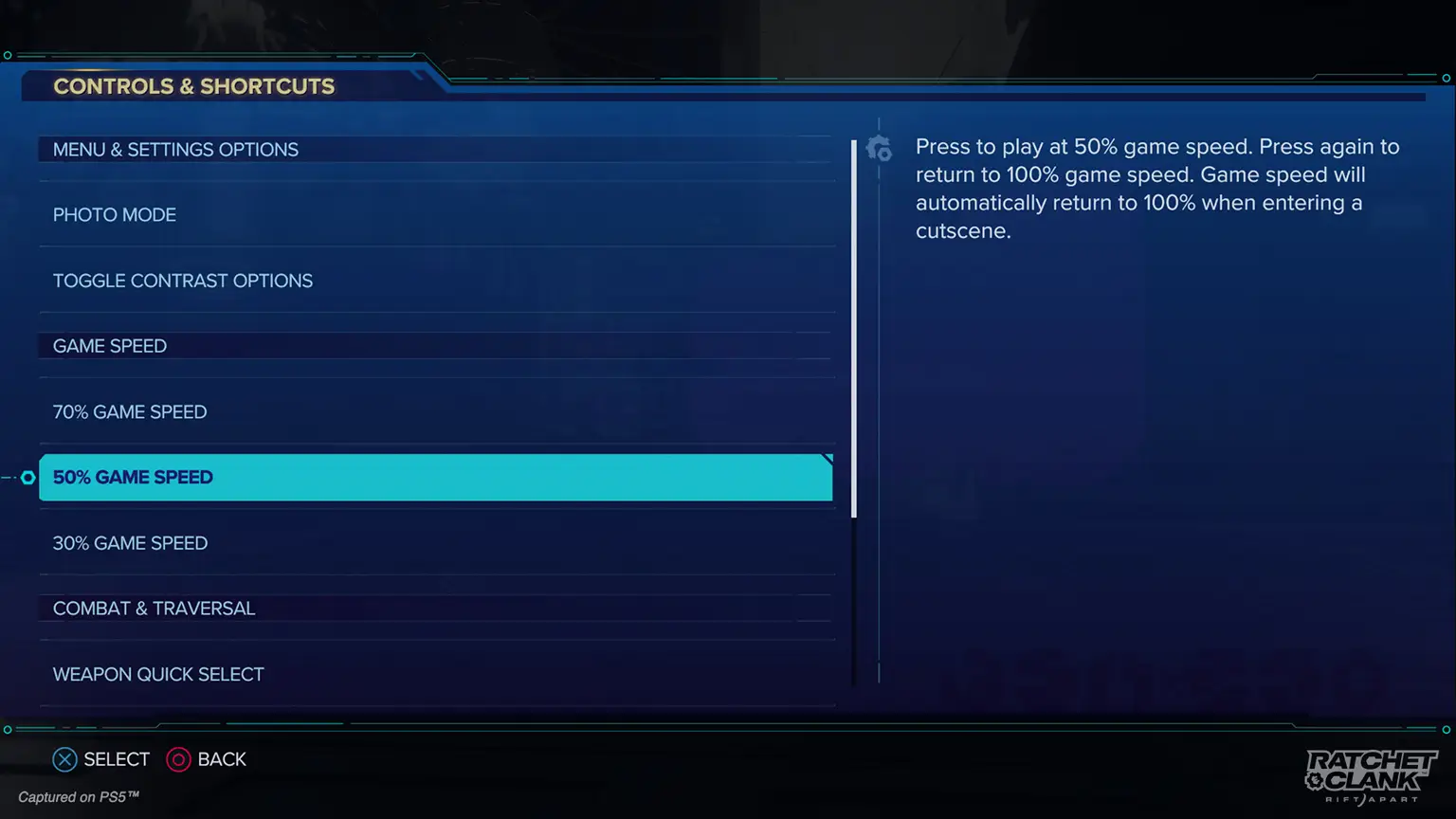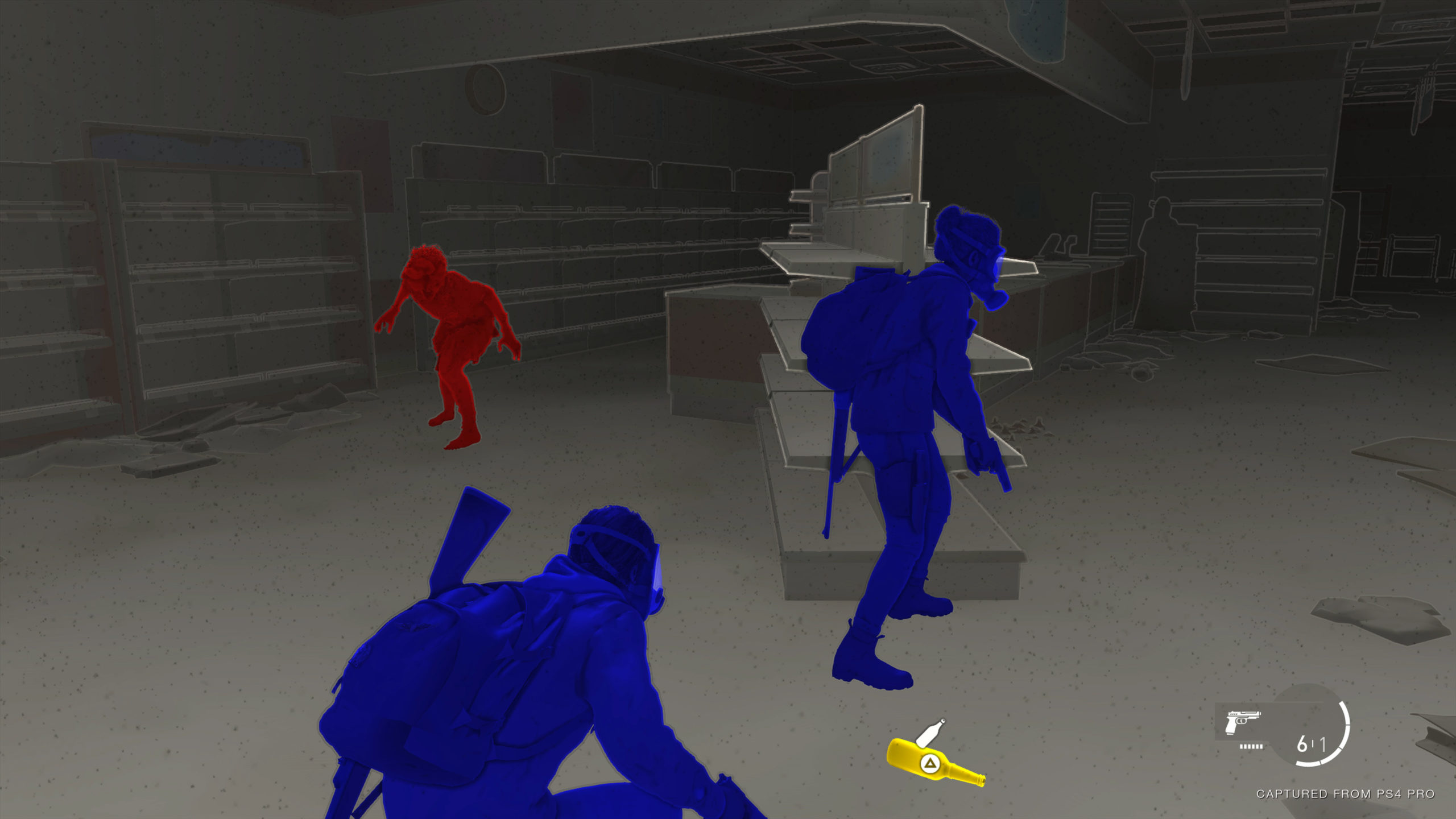Global Accessibility Awareness Day 2022 – Insomniac Games Developer Q&A: Accessibility and the Community
Hey everyone,
At Insomniac Games, accessibility is a critical part of the game development process. Inspiring players to do good is core to our beliefs, which means providing the tools to immerse them in the worlds we create.
We’ve seen firsthand how impactful accessibility features can be for players. It brings us joy when we read comments about how a feature like Contrast Options aided them in fully experiencing a gripping Super Hero adventure in Marvel’s Spider-Man, or how adjustable game speeds helped players jump, blast, and maneuver through the atmospheric cityscapes of Megalopolis in Ratchet & Clank: Rift Apart.
Accessibility is a team effort, one that not only includes our own employees at Insomniac Games but also the feedback and knowledge of the wider gaming community such as players, game devs, specialists, and advocates around the world. I spoke with a few Insomniacs about the importance of accessibility and how community impacts our work, which you can read below. Meet Michele Zorrilla (Advanced Sr. UX Researcher), Gil Doron (Associate Director of UI/UX), and Alex Owens (UI Programmer) – some of our studio advocates for accessibility!

Aaron Espinoza asks: What specific moments made you realize accessibility is important and what inspires you to continue that work today?
Gil Doron says: I will never forget the day that opened my eyes to the importance of accessibility in games. During the latter part of production for Marvel’s Spider-Man, there was an accessibility presentation shown to a small group of Insomniacs by Sam Thompson, a Senior Producer at SIE and a close collaborator with Naughty Dog. My knowledge of accessibility was limited at the time. My professional background was mostly first-person shooter multiplayers, and the only accessibility features we really discussed were colorblind options, primarily for in-world icons. I was not sure what to expect.
I felt like a whole world was opening. I was amazed by all the things Naughty Dog was adding to their games that fundamentally helped people enjoy their product who otherwise may have never been able to play if these features did not exist. Understanding this was about taking down barriers – whether visual, audio, or motor-based, and not about making games easier. We were excited to bring that philosophy to Insomniac Games. I remember immediately going to Ted and telling him we wanted to bring accessibility into the studio’s culture. He was very excited about that as well. That day changed my life professionally and emotionally. Accessibility in our games will always be a top priority for me.
Alex Owens says: Adaptive controllers and peripherals have been a big eye-opener for me. Seeing stories about veterans being able to play a game they loved after being unable to was incredibly inspirational. I was aware of basic features like subtitles, colorblind, remapping, but this really launched my passion and advocacy for accessibility in games.
That’s awesome. In general, community is a major source of feedback for our games. How has community feedback impacted your work on accessibility?
Michele Zorrilla says: The community has influenced and affected our work on accessibility twofold, and is a super important part of the process! First, by taking the time to report issues or ask questions around accessibility. There are things we just don’t catch, are unaware of, or we wanted to do something and weren’t able to. Having folks share their thoughts and situations is really helpful to demonstrate how people are affected both positively and negatively. Even if we couldn’t do something for one game, it helps us plan for the next.
And second, by expressing appreciation for the things we’ve done right! It’s wonderfully heartwarming and rewarding for the team to see people enjoying our games. Knowing more people can play, can play longer or more comfortably, or have a better experience because of inclusive design or accessibility settings – that’s why we do this.
Gil says: Community feedback has a major Impact! When we released Marvel’s Spider-Man, it set the standard for our accessibility features. I still get a little emotional thinking about all the amazing posts on social media from fans that were so appreciative of the accessibility features we put in: people letting us know they could finish the game because of what we added and how happy it made them. A compilation of those tweets was actually used in our studio as inspiration to do more and further embrace accessibility. Now, with our third major release with accessibility features, we have more than tripled the amount features and settings in our games and always continue to listen to our community on how to do better.
Alex says: By far one of the best feelings as a game developer is watching a video or reading a story of a person living with a disability that is finally able to play our game. I also love games that are created or changed with direct feedback from the community.
One of our beliefs at the studio is that inspiration can come from anywhere. Can you recall an instance where inspiration for an accessibility feature came from outside our studio?
Michele says: Chases in Marvel’s Spider-Man were a hard blocker for some players, like the Electro Chase toward the end of the game. Players would get so far and then just be unable to finish or have to pass the controller to someone else to do the chase for them. This was the whole reasoning behind Chase Assist in Marvel’s Spider-Man: Miles Morales and Marvel’s Spider-Man Remastered. When those came out, it was super cool to hear stories of players being able to catch Electro and then continue on and finish the game.
Around the time we were preparing for the release of Ratchet & Clank: Rift Apart, there was a lot of community feedback around the trailing visual effect for the Phantom Dash – it could be disorienting or distracting. We couldn’t get it in time for launch, but shortly after release we were able to add a feature to disable the Phantom Dash Effect.
Alex says: In my humble opinion, the best accessibility in a AAA game is definitely The Last of Us Part II. The vast suite of options, settings organization with presets and just overall coverage of accessibility needs is incredible and very inspiring. It has settings for visual (contrast mode, text-to-speech, UI scaling and colorblindness, traversal and combat cues), audio (dodge prompts, haptics cues, awareness indicators), motor (full button remapping, upside down controller support, aim and sprint toggle) and many more (the enhanced listen mode and navigation/traversal assistance settings are so well done). You can tell they had highly aspirational accessibility goals early in development and worked on them for years.

As a larger gaming community, we set new benchmarks every year in the realm of accessibility. What’s something that you’re especially proud to see in this space today?
Michele says: There’s been a shift toward accessibility and inclusive design that just gives people the ability to play their way, and this is SO COOL to see. We love to geek out over cool features in other games ourselves – like Marvel’s Guardians of the Galaxy‘s closed captions, Horizon Forbidden West‘s tinnitus setting, and The Last of Us Part II‘s robust audio cues and library. Not every game is accessible for every person, but seeing what other studios are doing helps inspire us to do more.
Gil says: The embracing of accessibility in games has been wonderful to see within the community. Only a few years back, the discussion of accessibility in any mainstream setting was unheard of. Now, you have more devs implementing accessibility features and more fans talking about it. There are developer diaries dedicated to accessibility features in upcoming games, accessibility trailers for games, more advocates on social media with big followings. This kind of momentum should keep the ball rolling with more developers participating and innovating for years to come.
Alex says: I think platform holders are doing things in a very smart way that can work for all developers. Things like platform-side text-to-speech and speech-to-text support, system level button remapping, accessibility settings preferences, unique controllers and even guidelines that are structured similar to a certification process for better standardization. I also love that Best Accessibility Awards are commonplace now – there are even whole awards shows dedicated to it.
What are the ways our community can become advocates or become involved with accessibility initiatives?
Gil says: Be specific when advocating for accessibility. If you want to see a game do better, tell us what would help. Let us know what’s preventing you from completing your experience. Tell us what’s causing you frustration. Overall, game developers want to do better, and specificity really helps. If we cannot pinpoint the problem, then what we do to fix – if it gets fixed at all, may not be the help you were looking for.
Alex says: Accessibility Features are for all players. Use these features if they will make the game more enjoyable for you. Using the features helps us know what players not only ask for, but what they’re using. Highlight games that are doing really innovative work in accessibility and follow people online who specialize in this field who are working hard every day advocating for it.
Michele says: If you have accessibility feedback or if you experienced a barrier in one of our games, please send that to us! To submit feedback or a request, visit our Support Page, which has an option for “Accessibility”!

Thanks for taking the time to chat with me about accessibility and the community, everyone! If people want to connect with you, where can they find you?
Gil says: You can find me on Twitter at @GilFromUI.
Alex says: You can find me on Twitter as well at @CinephileAlex.
Michele says: You can also follow me on Twitter @Singular_L.
We hope this provided you with some insight into how the community inspires us at Insomniac Games. We’ve interviewed only just a few of the many Insomniacs committed to making games more accessible and approachable for players around the world – it’s something that we’re all committed to for our future projects. If you have any feedback about our accessibility features, we invite you to share them in our Discord server or hit us up on our social media on Twitter and Instagram. As Michele mentioned, you can also submit feedback via our Support Page, which includes an “Accessibility” section in the drop menu! Your feedback, your stories, and your experiences are truly invaluable resources for our team – please continue to share them with us!
Thanks for reading,
Aaron “TheAgentOfDoom” Espinoza